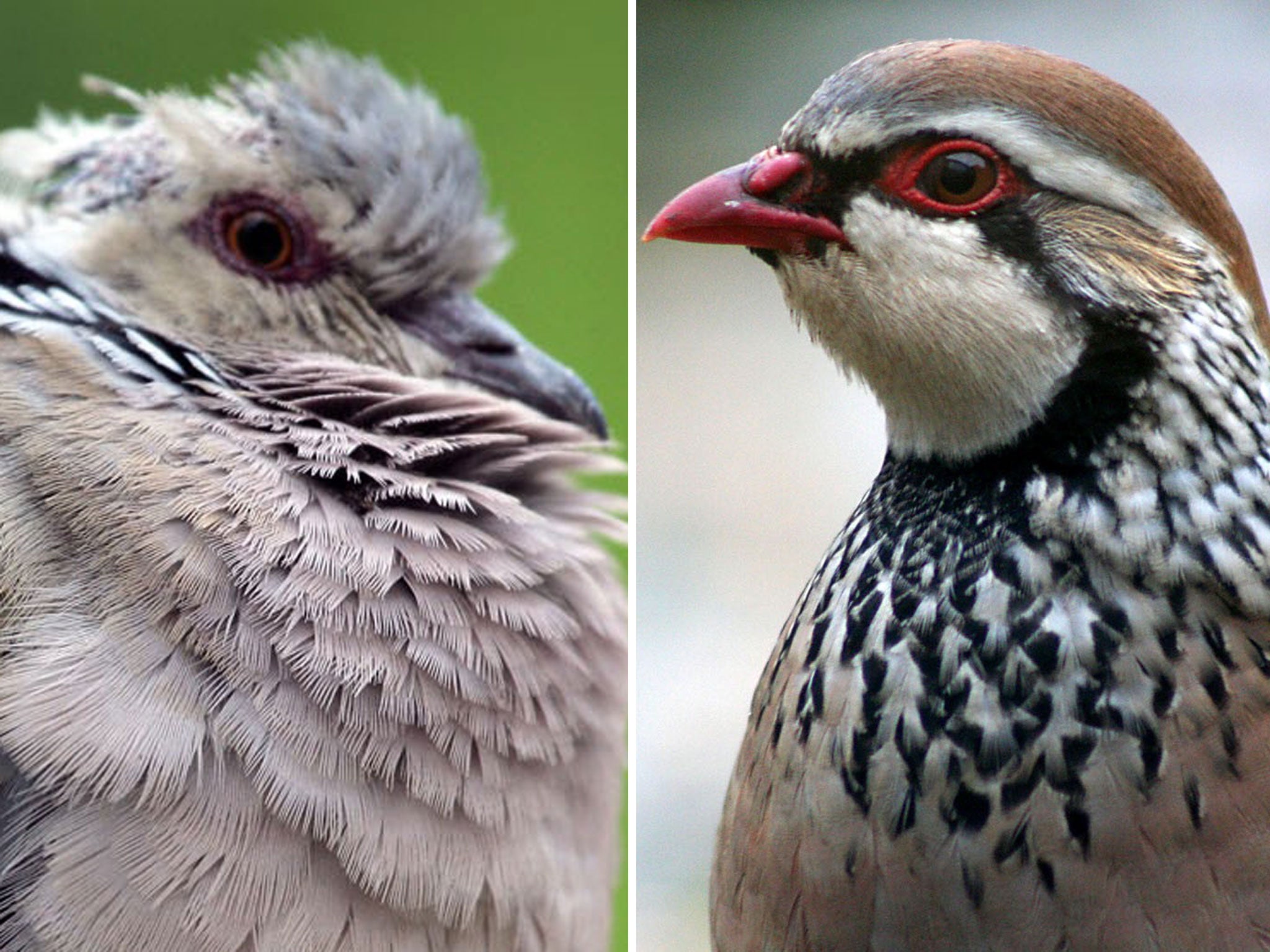On the first day of Christmas... my true love had to get some other gift ideas: Britain's Christmas birds 'rapidly disappearing'
The stars of the chorus of “The Twelve Days of Christmas”, the turtle dove and the grey partridge, are disappearing from many parts of the UK

Your support helps us to tell the story
From reproductive rights to climate change to Big Tech, The Independent is on the ground when the story is developing. Whether it's investigating the financials of Elon Musk's pro-Trump PAC or producing our latest documentary, 'The A Word', which shines a light on the American women fighting for reproductive rights, we know how important it is to parse out the facts from the messaging.
At such a critical moment in US history, we need reporters on the ground. Your donation allows us to keep sending journalists to speak to both sides of the story.
The Independent is trusted by Americans across the entire political spectrum. And unlike many other quality news outlets, we choose not to lock Americans out of our reporting and analysis with paywalls. We believe quality journalism should be available to everyone, paid for by those who can afford it.
Your support makes all the difference.Two birds which are icons of Christmas are tumbling catastrophically in numbers, the Royal Society for the Protection of Birds has warned.
The stars of the chorus of “The Twelve Days of Christmas”, the turtle dove and the grey partridge (the one that’s in-a-pear-tree) are disappearing from many parts of Britain.
Once widespread in the south, the turtle dove population – which is currently estimated at 14,000 pairs - is now “balancing on a knife-edge in the UK”, with nearly 60 per cent lost just in the five years to 2010, the RSPB said.
The UK grey partridge population is estimated to be around 43,000 pairs, but this too has fallen, by 30 per cent over the same period.
“Losing six out of ten of our turtle doves and three out of ten grey partridges in five years is nothing short of an unsustainable wildlife disaster,” said RSPB conservation scientist Dr Mark Eaton.
“The turtle dove is in a great degree of danger - if this trend were to continue we could be down to fewer than 1000 pairs by the middle of the next decade, with complete extinction a real possibility.
“These two icons of Christmas are telling us that wildlife is in crisis. We are urging the Government to take urgent action to save these species from becoming just memories within the Twelve Days of Christmas festive classic.”
The RSPB warning came as the Government released its annual report on wild bird populations, which showed that farmland birds as a whole, including the two Christmas species and other such as the skylark and the corn bunting, have continued to decline, despite millions of pounds being spent to allow farmers to carry out environmental stewardship schemes.
The breeding farmland bird index was at half – 50 per cent – of its 1970 level in 2011, the lowest level ever recorded – which means that just in the time since the breakup of the Beatles, half of the birds visible on a typical country walk have vanished.
The Countryside Restoration Trist said that the farmland birds decline has happened despite £500 million of public money being poured into agri-environment schemes. “England has 5.6 million hectares in the Entry Level Scheme covering over 41,500 holders (farm holders), and 882,000 hectares in England are managed under the Higher Level Scheme, covering 8,500 holders,” said Robin Maynard, the CRT campaigns director.
“The total land area in England under all agri-environment schemes is 6.2 million hectares – but it's not making any significant difference.”
The statistics show that woodland birds are also significantly declining and in 2011 the woodland bird index was at 17 per cent of its 1970 level.
The Department for the Environment, Food and Rural Affairs (Defra) accepted that more needed to be done to support the recovery of farmland and woodland birds. “We all have a part to play, and we will continue to work with conservation groups and landowners to reverse this trend,” a Defra spokeswoman said.
Join our commenting forum
Join thought-provoking conversations, follow other Independent readers and see their replies
Comments